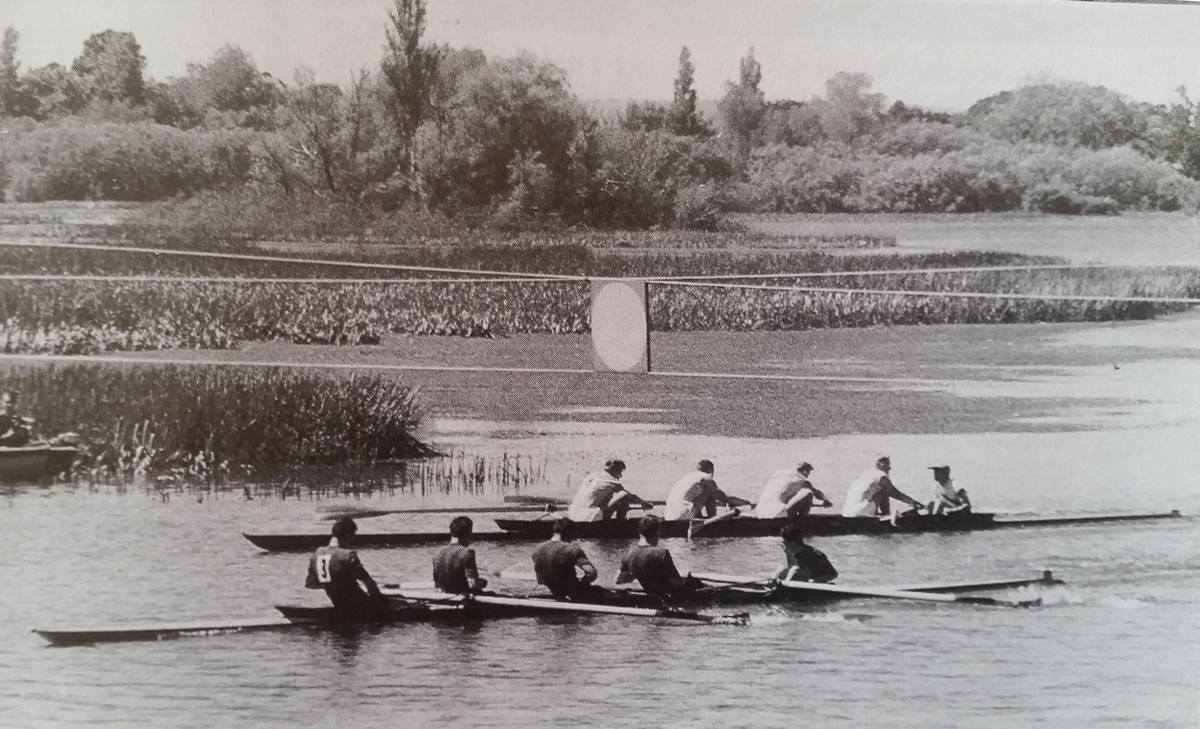article by Nicholas Pucci
Ever since Ercole Olgeni and Giovanni Scatturin, together with the helmsman Guido De Filip, took the gold in the duet at the Antwerp Games in 1920, Italy has often figured among the best in rowing medals. With the quattro con, for example, she climbed to the top step of the podium in 1928, in Amsterdamthen finishing second four years later, at Los Angeles 1932, before return to acting as a protagonist in this vessel in 1956, when the boat and the rower we are telling you about today appear on the scene.
At the 1956 Melbourne Olympics, the legacy of Czechoslovakia, Switzerland and the United States must be taken upwho occupied the three steps of the podium in Helsinki 1952, and for Italy a crew is in the running which is made up of Franco Trincavelli, from Lecco from Abbadia Lariana born in 1935, who competes for the GSMoto Guzzi, by Romano Sgheiz, also from those parts, precisely from Colico, the youngest being born in 1937 , of Alberto Winkler, from Bolzano from Castelbello-Ciardes, born in 1932, and of the 24-year-old Angelo Vanzin, from Como from Lierna, with helmsman Ivo Stefanoni, born in Mandello del Lario on 5 June 1936. The four rowers bring the third place obtained at the recent European Championships in Bled, behind Finland and the Soviet Unionand it is with them that from 23 to 27 September 1956, in the waters of Lago Wendoureefind themselves battling, with the addition of four with Sweden who sets the best time in heat, 6’57″9, with Italy winning the first series in 7’00″0 ahead of the Soviet Union and New Zealand.
In the semifinals, the blue quartet precedes Australia, 7’54 “4 against 7’59” 8, hitting the final, to which Sweden and Finland also qualifywho with their respective times of 8’01″8 and 8’08″1 occupy the first two positions of the second semifinal, excluding the Soviets and the Americans. In the final act, the four with the tricolor really knows no opponents, imposing its own pace on the race to finally cross the finish line in 7’19″4, three seconds better than Sweden who finished second, in turn clearly outdistanced Finland who takes the bronze medal.
Four years go by and in 1960, at the Rome Olympics, Trincavelli replies with the five-circle appointment, passing for a first place in the eight at the Duisburg European Championships in 1957 but without being on the podium again with the four with in the great international events, this time competing alongside Romano Sgheiz himself, Fulvio Balatti and Giovanni Zucchi, always with Ivo Stefanoni as helmsman.
From 30 August to 3 September the boats row in the waters of the basin Lake Albano to Castel Gandolfo, and after winning the first heat in 6’40″10 ahead of Australia, the four with Italian beats the same opponent and Hungary also in the semifinal, covering the distance in 7’02″86 and qualifying for the final on a par with Germany , which has won the last three editions of the European Championships, which with a time of 7’00″47 anticipates France, forced to go through the repechage forks in the first round, and the Soviet Unionin turn admitted to the regatta that assigns the medals.
To the decisive act it is precisely the Germans and the surprising transalpines who command the racewith the quartet consisting of Gerd Cintl, Horst Effertz, Klaus Riekemann and Jurgen Litz, with helmsman Michael Obst, who fully confirms its status as a great favorite for the gold medal, finally winning on Robert Dumontois, Claude Martin, Jacques Morel and Guy Nosbaum, with helmsman Jean Klein, at the end of a tight but always safely conducted regatta, 6’39″12 against 6’41″62, with Italy, 6’43″72, which is forced to settle for the bronze medal.
Here ends the Olympic epic of Franco Trincavelli and the four with blue. And, it seems to me, that there really is something to be satisfied about…
